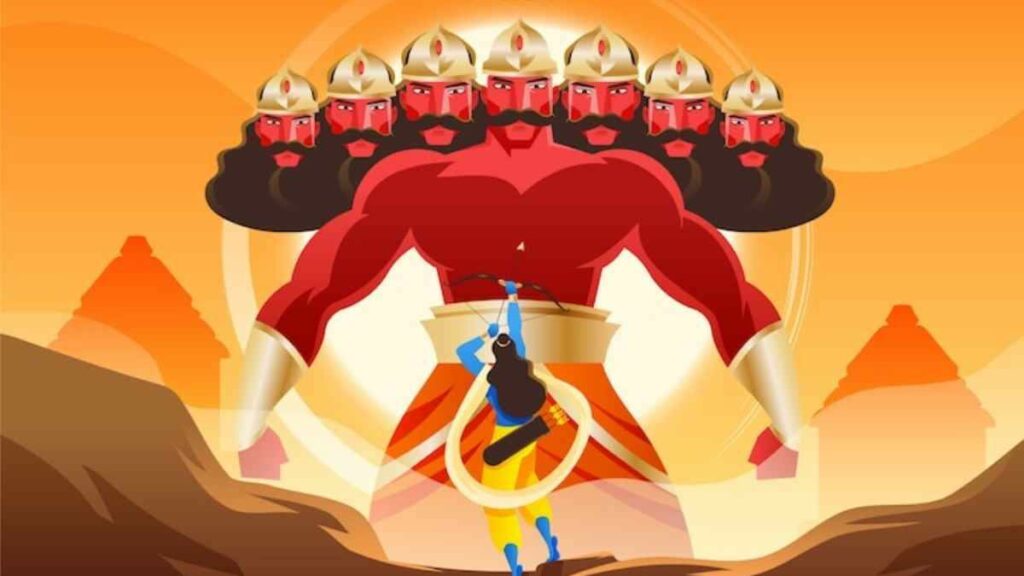New Delhi: Sharad Navaratri is predominantly a Hindu festival that is celebrated over the course of nine days and nights. The Sharad Navaratri is observed annually during the September-October months and depicts the onset of autumn season in India.
The tenth day of the festival is observed as Vijaydashmi or Dusshera. It was celebrated on Wednesday, October 05, 2022. Dusshera is celebrated on the last day of the Sharad Navaratri and marks an official end of the festival.
Dusshera denotes the victory of good over evil and there are two predominant Hindu mythological tales associated with the festival.
The first tale dates back to when goddess Durga appeared and successfully defeated a well-known and feared Buffalo-ddemon named Mahishasur. The battle ensued over the course of nine days, ultimately resulting in the death of the manipulative yet powerful demon.
Another tale dates back to the Vedic ages where Lord Rama successfully defeated the Demon King of Lanka, Ravana, with aid of a small army of monkeys.
Therefore, the festival is celebrated by performing large scale Ravana Dahan, that involves burning of huge, life-size effigies of demons Ravana, Kumbhkarana, and Meghnada.
The festival also includes immersing idols of goddess Durga in water bodies and praying that she wards off evil and miseries from lives of the devotees.
Dusshera or Vijaydashami falls on the tenth day of the Sharad Navaratri festivities. The Hindu festival is observed on the Shukla Paksha Dashmi during the month of Ashwin on the day after Maha Navami or at the end of Shard Navratri, according to the Hindu calendar.
According to Drikpanchang, the puja muhurat for Dusshera falls on October 5 from 02:07 pm to 02:54 pm, whereas the Durga Visarjan muhurat is from 6:16 am to 8:37 am this year.
Many view the festival as the onset of Diwali. The festival of lights is celebrated exactly 20 days after Vijaydashami. It is celebrated to mark the arrival of Lord Rama, his wife Sita, and Hanuman in Ayodhya after they were banished from the city to a 14-year exile.
People worship the Shami tree on Dusshera. The tree holds a great significance in most parts of the country. It is believed that Arjun from Mahabharata had hidden his weapons in the trunk of the Shami tree during the Pandava’s exile.
The Shami Puja is also known as Banni Puja and Jammi puja and is observed in several parts of South India. Devotees bid adieu to goddess Durga throough immersion.
The immersion is carried out either during Aparahna time or Pratahkala within the Dashami Tithi. Several people worship weapons, cars, pens, or other assets that they had purchased in the previous years. The day also remembers Lord Chitragupta and people worship their books of accounts, business bills, cash and cheque books, etc.
(Avya Mathur)

